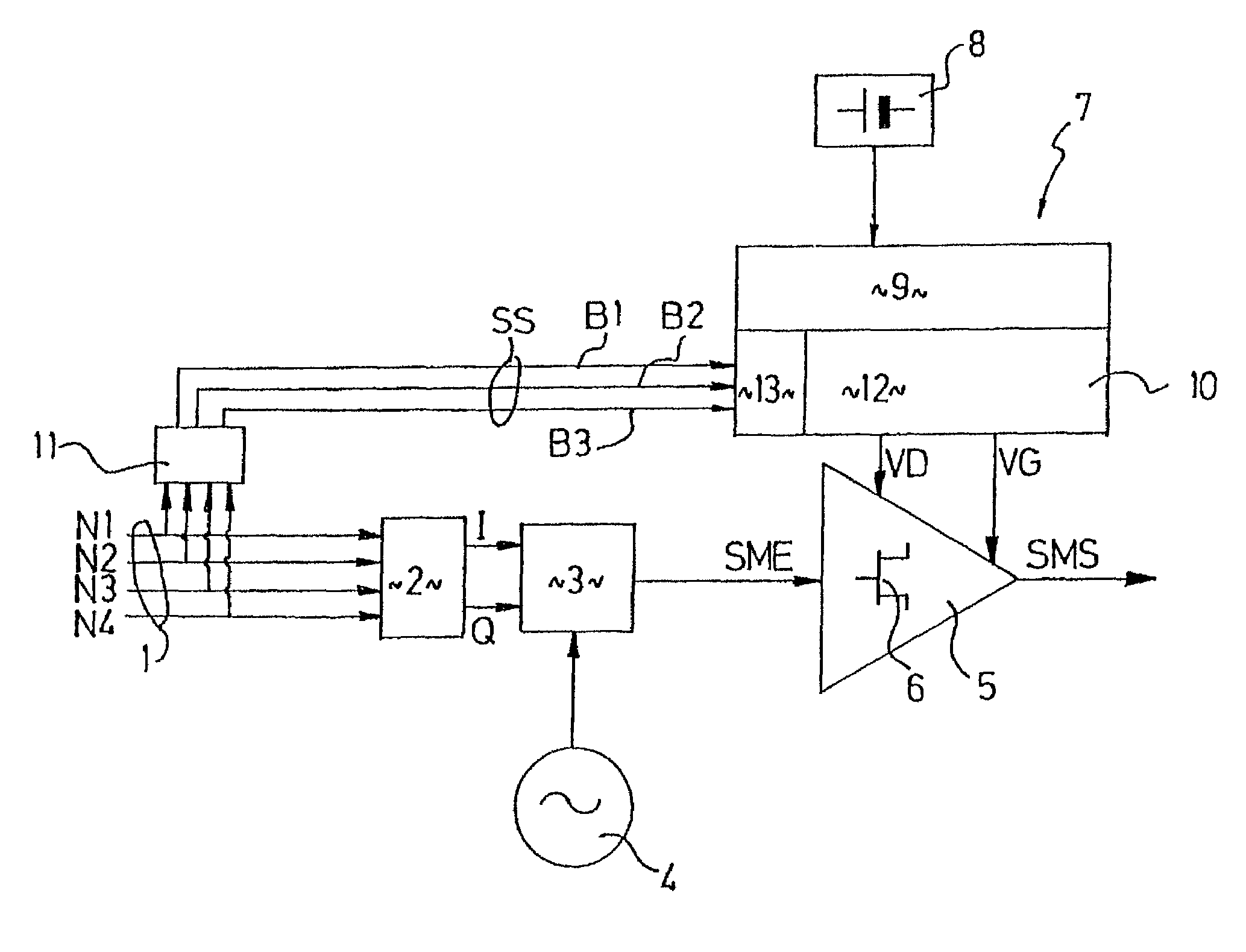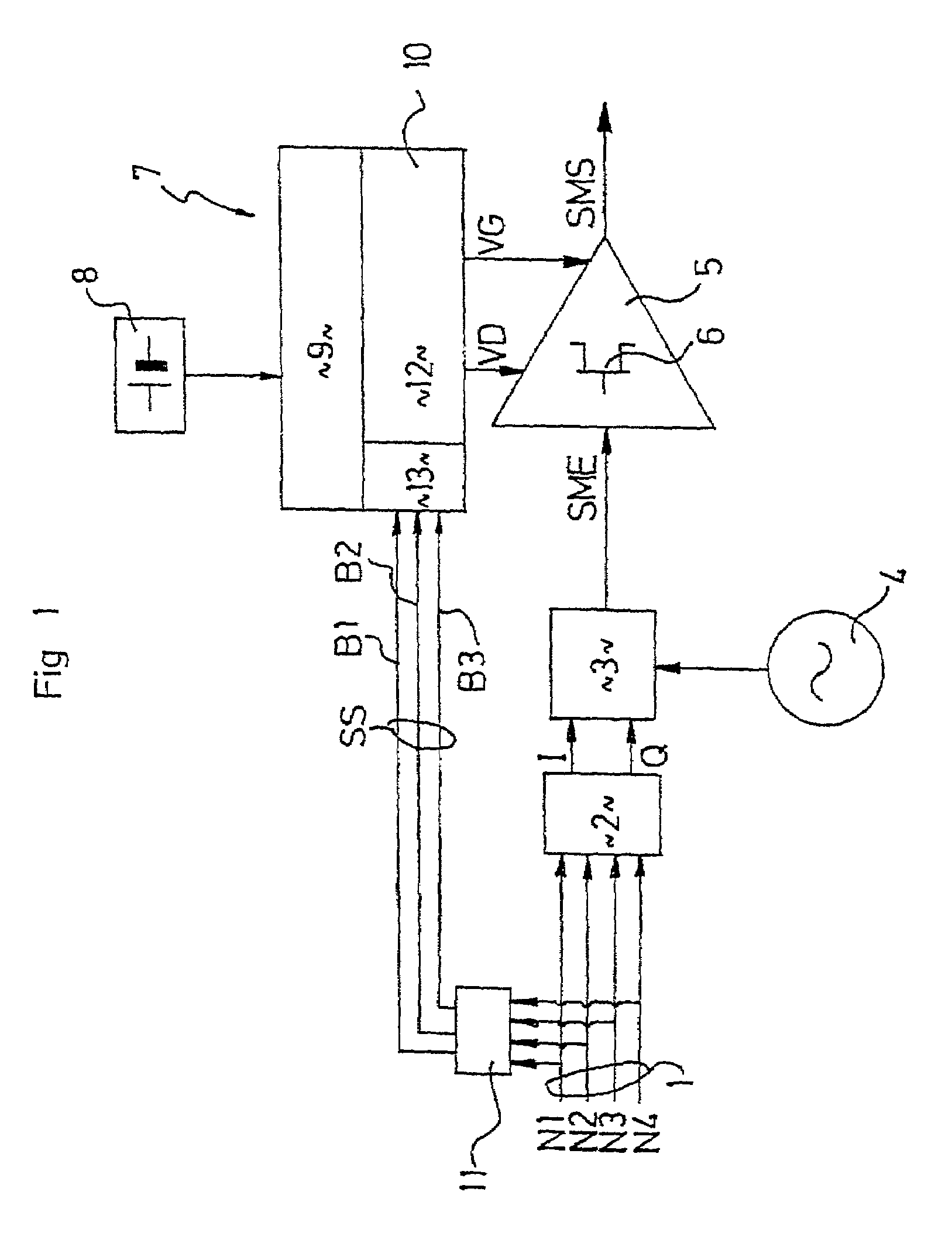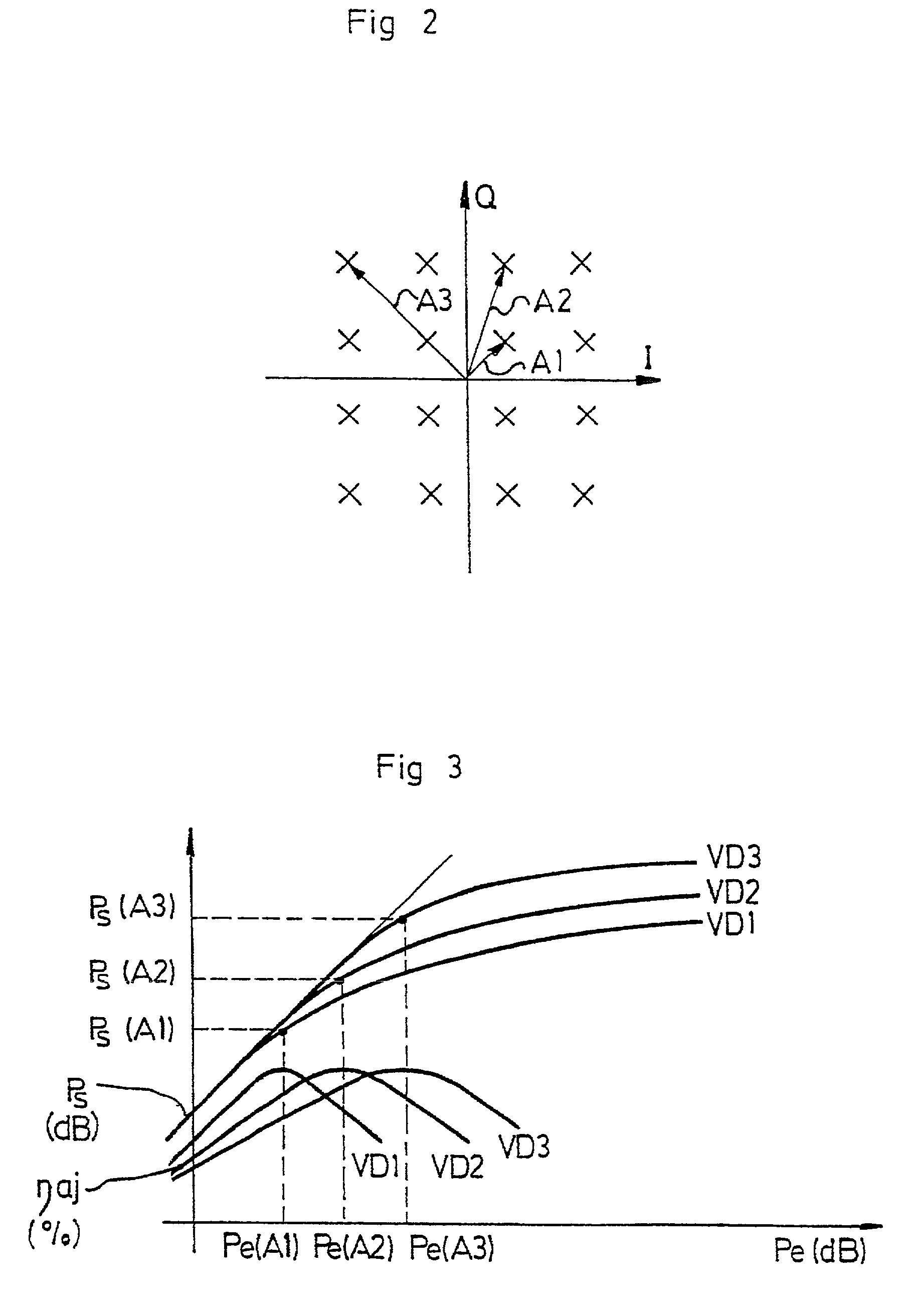Modulated radio signal transmitter with self-adapted amplification polarization
a radio signal and self-adaptive technology, applied in the field of transmitters of radio signals, can solve the problems of low efficiency, low efficiency, and overall electrical consumption, and achieve the effect of simple and inexpensive production and easy application
- Summary
- Abstract
- Description
- Claims
- Application Information
AI Technical Summary
Benefits of technology
Problems solved by technology
Method used
Image
Examples
Embodiment Construction
[0044]The transmitter according to the invention schematically represented in FIG. 1 receives digital data to be transmitted, referred to as digital control signals 1, which comprise four bits N1, N2, N3, N4 in the example that is represented. The digital control signals 1 are supplied to a digital / analog converter 2 which delivers two analog signals I, Q in quadrature, which are in turn supplied to a modulator circuit 3 whose output delivers signals, referred to as input modulated signals SME, modulated on a carrier delivered by an oscillator 4 to the modulator circuit 3.
[0045]The input modulated signals SME are supplied to a power amplifier 5 comprising at least one power transistor 6, at least one of which is an output power transistor that delivers output modulated signals SMS supplied to a transmission antenna (not shown).
[0046]Each power transistor 6 of the amplification means 5 is biased by bias means 7 providing the drain bias voltages VD and gate bias voltages VG of the fie...
PUM
 Login to View More
Login to View More Abstract
Description
Claims
Application Information
 Login to View More
Login to View More - R&D
- Intellectual Property
- Life Sciences
- Materials
- Tech Scout
- Unparalleled Data Quality
- Higher Quality Content
- 60% Fewer Hallucinations
Browse by: Latest US Patents, China's latest patents, Technical Efficacy Thesaurus, Application Domain, Technology Topic, Popular Technical Reports.
© 2025 PatSnap. All rights reserved.Legal|Privacy policy|Modern Slavery Act Transparency Statement|Sitemap|About US| Contact US: help@patsnap.com



